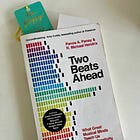The Magic of Live Music - Up Your Vibration
Why our souls crave concerts - feeling the beat lifts us up to make us happier and healthier
Well hello Readers,
Forget Bedlates, Hotelates, or even Poolates…
Today I’m sharing a short sesh I’m calling Tentlates!
This post is inspired by my wonderful Easter sojourn to the Byron Bay Bluesfest - four days of amazing music and fun where I camped in “Tent City”.
The first night of the fest I goofily filmed a wee bit of Pilates from my camp bed and yes, that’s a foam roller in the corner! (when you travel by car, I figure why not take as much crap restorative equipment as you can!)
This is just to show that you can do Pilates wherever you happen to find yourself, that it can be fun, and that it doesn’t need to be a long sesh for you to benefit - remember breathing and moving is what it’s all about!
We were getting ready to go back into the festival grounds to hear Christopher Cross and then the evening’s headliner, Toto - yes Toto! My kiddo is a huge fan and as a trained singer has told me for years about their musicianship and turns out they were right. Here’s a short clip of a song you might be familiar with:
Right after this they segued into Africa closing the night out and the energy was AMAZING! Everyone was singing along and there was a collective vibrational buzz you could not deny.
Which brings me to the ‘real’ point of this post:
The Power of Listening to Live Music - Specifically its Health Benefits!
So why do we feel so good after a raucous live concert?
What’s going on in our bodies?
Good Vibrations
We naturally want to move our bodies to the beat and the feeling of pleasure that we get when our body wants to move to music has been called “groove”. Research shows that low frequency vibrations1, so low that we can’t audibly hear them, can encourage us to dance. Even though we can’t hear the sound vibrations they hit our inner ear (vestibular system) and our skin (vibrotactile) so we feel them.
If you’ve ever been overtaken with the desire to dance this might be why. It reminds me of one of my favourite bits from comedian Steve Martin: Happy Feet
It’s the vibrations, especially in the bass beats, that make us want to move. To add fuel to my fire that we need to move our bodies for our health, a systematic review of the research2 shows that dancing increases neuroplasticity.
We’re All in This Together
There’s also the communal aspect of a shared experience. When you’re singing with thousands of strangers, many of whom love your favourite artist just as much as you do, there’s a syncing up of cardiovascular and respiratory systems3 and this could be why we feel so bonded at a live concert.
There’s also research that shows that stress-free singing situations, aka singing along at a concert (as opposed to performing) can reduce levels of cortisol and cortisone.4
One of the best things about the fest was chatting up people in line or at the campsite to see who they were most looking forward to hearing. Because of the variety of artists on offer I found myself sharing “must sees” and being turned on to artists that weren’t necessarily on my radar.
Check out Roshani who was so comfortable in front of the crowd from her years of busking and told a great story about firing her hubby. I also loved the smooth soul of Don West and Wilsn. More groovieness? How about Cimafunk or Neal Francis.
Of course besides Toto there were some old faves, Crowded House anyone? Missy Higgins? Kasey Chambers? The last night we caught the legendary Chaka Kahn - what an effing voice!
Music to Soothe The Savage Beast
Did you know that the above quote has been kindov’ mangled?? The real quote is,
“Musick has Charms to sooth a savage Breast”
It continues…
“To soften Rocks, or bend a knotted Oak.”
Written in 1697 by the poet William Congreve, it comes from his play, The Mourning Bride and speaks to the power of music.
Why am I bringing up this dusty quote? Well, live music is not only powerful at festivals but has shown positive outcomes for hospital patients, people living in nursing homes, and those with dementia.
Live music, even when played remotely through a screen, can enhance the wellness not just of patients but their families and caregivers as well.5
People with low to mid level dementia are more cooperative and communicative post concert and even those with more advanced forms of dementia can still receive benefits showing reduced anxiety and agitation.6
In my podcast book review on
I shared a link to Sen Sound, Yoko Sen’s immersive and healing soundscapes for healthcare environments.
Protect Your Ears
It would be remiss of me not to mention an unhealthy aspect of live music and that is potential hearing loss.
I remember in my 20’s after an especially loud concert thinking how cool it was that I had ringing in my ears for several days. Ahhh youth, how cavalier we all were before we knew how much effing damage we were doing to ourselves.
I know my newsletters lean into the personal but on an especially personal note, my hubby has quite significant hearing loss.
Okay, let’s just say that he is profoundly deaf - if he takes his hearing aids out I either need to get right up close to his ear and yell down his ear canal or we converse like we’re playing charades. He attributes a large portion of his hearing loss to aaaaaalll the really loud rock concerts he attended from his teenage years well, well, well into his adulthood.
Guess what, all the stats they tell you about hearing loss being bad for your health are true. You’re at an increased risk for depression, cognitive decline, and dementia and your quality of life gets worse. So…
Take Home Message
Seeing/hearing your favourite band live at a festival (or even through a screen) is good for your health. Just make sure to take some earplugs because what it’s not good for is your hearing!!!!
I hope you have a great week, next up: May’s Vibrancy Booster Bites
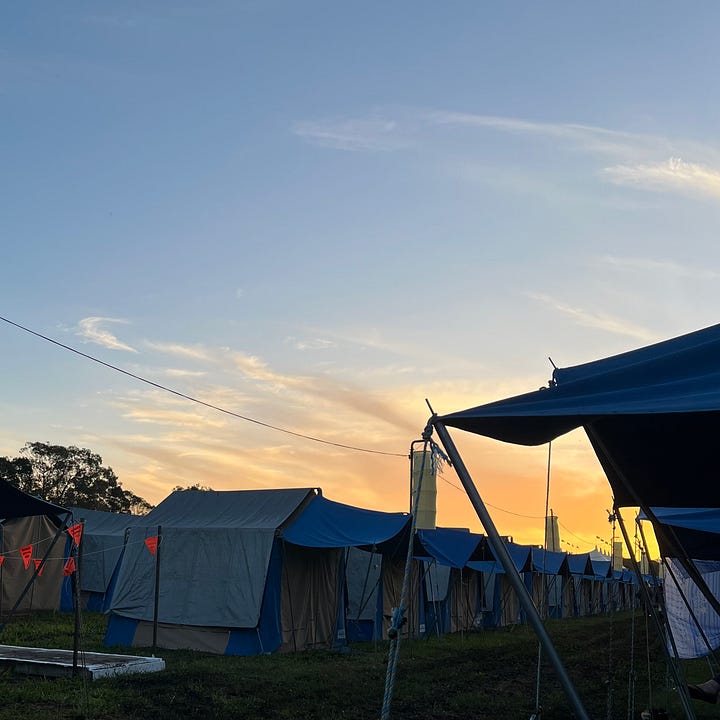
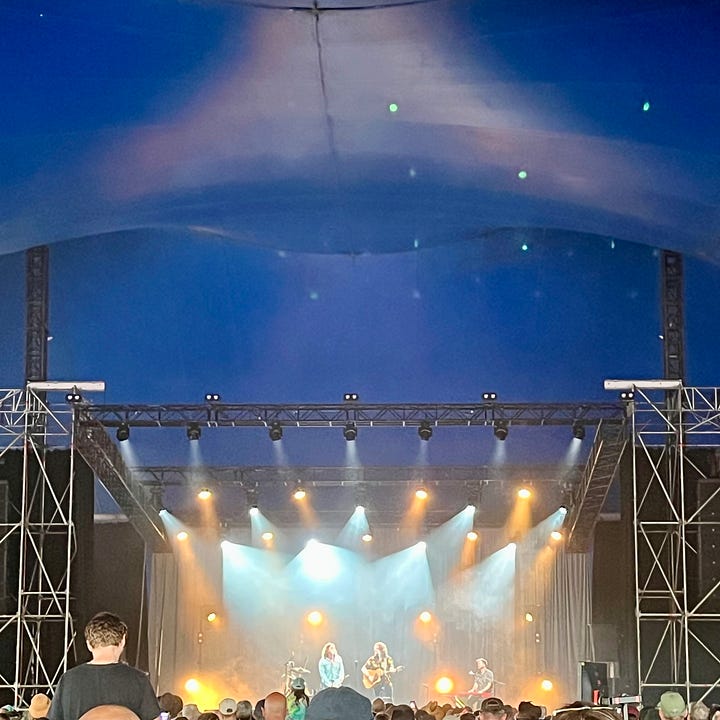
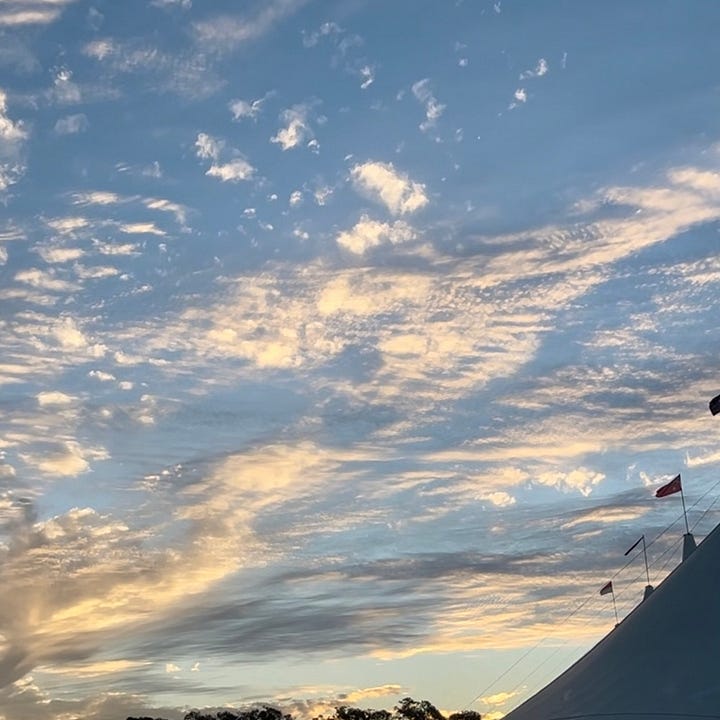
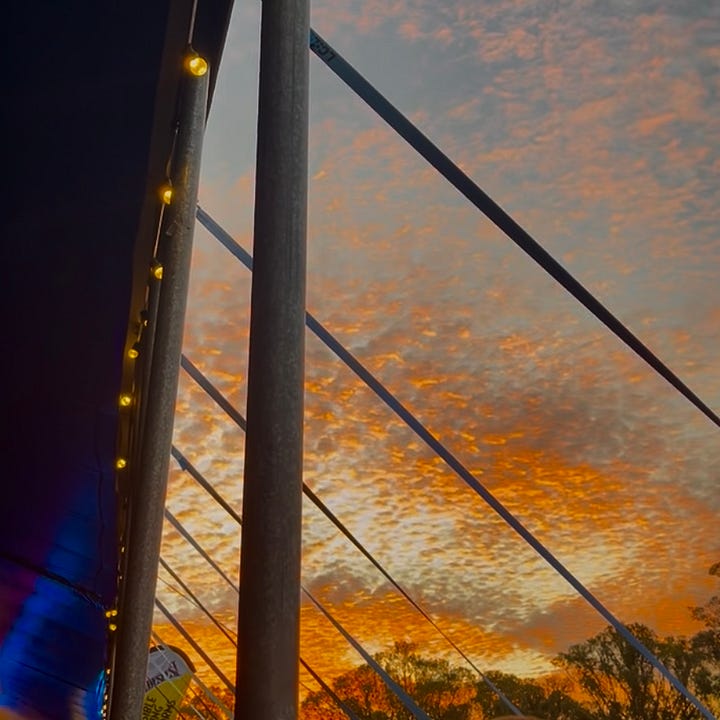
Cameron DJ, Dotov D, Flaten E, Bosnyak D, Hove MJ, Trainor LJ. Undetectable very-low frequency sound increases dancing at a live concert. Curr Biol. 2022 Nov 7;32(21):R1222-R1223. doi: 10.1016/j.cub.2022.09.035. PMID: 36347227.
Teixeira-Machado L, Arida RM, de Jesus Mari J. Dance for neuroplasticity: A descriptive systematic review. Neurosci Biobehav Rev. 2019 Jan;96:232-240. doi: 10.1016/j.neubiorev.2018.12.010. Epub 2018 Dec 10. Erratum in: Neurosci Biobehav Rev. 2025 Feb;169:105331. doi: 10.1016/j.neubiorev.2023.105331. PMID: 30543905.
Bernardi NF, Codrons E, di Leo R, Vandoni M, Cavallaro F, Vita G, Bernardi L. Increase in Synchronization of Autonomic Rhythms between Individuals When Listening to Music. Front Physiol. 2017 Oct 17;8:785. doi: 10.3389/fphys.2017.00785. PMID: 29089898; PMCID: PMC5651050.
Fancourt D, Aufegger L, Williamon A. Low-stress and high-stress singing have contrasting effects on glucocorticoid response. Front Psychol. 2015 Sep 4;6:1242. doi: 10.3389/fpsyg.2015.01242. PMID: 26388794; PMCID: PMC4559645.
Ambler M, Janss A, Stafford RS, Lin B, Florom-Smith A, Kang AW. Voices of Musicians: Virtual Live Bedside Music Concerts in Inpatient Care. Healthcare (Basel). 2023 Nov 9;11(22):2929. doi: 10.3390/healthcare11222929. PMID: 37998421; PMCID: PMC10671553.
Shibazaki K, Marshall NA. Exploring the impact of music concerts in promoting well-being in dementia care. Aging Ment Health. 2017 May;21(5):468-476. doi: 10.1080/13607863.2015.1114589. Epub 2015 Dec 15. PMID: 26666405.



